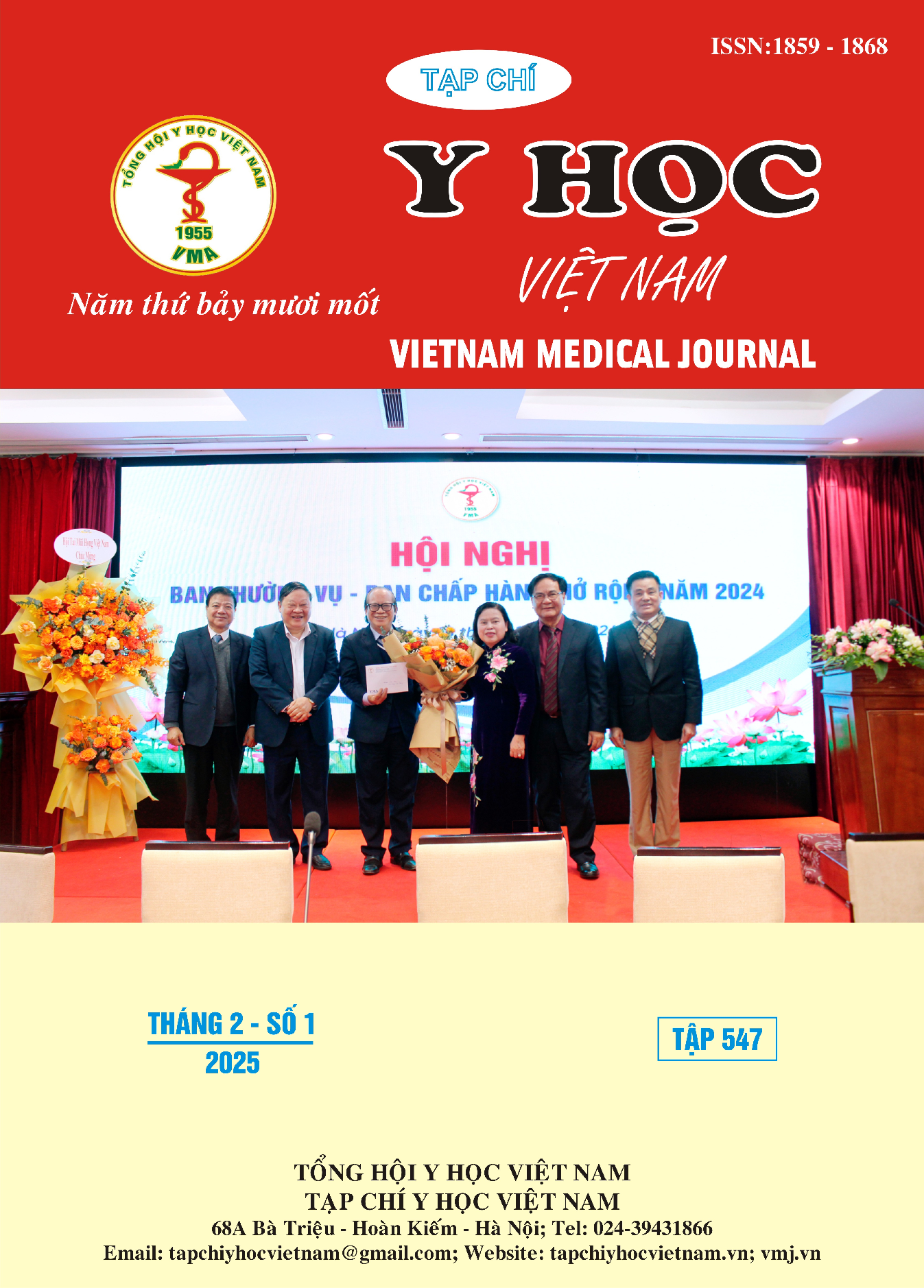EVALUATION OF DRY EYE POST-CORNEAL REFRACTIVE SURGERY AT SAIGON - HANOI EYE HOSPITAL
Main Article Content
Abstract
Objective: To describe the clinical characteristics of dry eye in patients after refractive surgery at Saigon - Hanoi Eye Hospital. Subjects and Methods: This study was designed as a prospective descriptive study on 158 eyes of 79 patients who underwent surface laser refractive surgery. The dry eye condition was assessed using the Ocular Surface Disease Index (OSDI) questionnaire and by conducting the Schirmer Test I, Schirmer Test II, Tear Film Breakup Time (FBUT), and Tear Meniscus Height. The criteria for defining dry eye were based on the standards of the Asian Dry Eye Society, with an OSDI score of 13 or higher. Patients were assessed for dry eye before surgery, and at 1 week, 1 month, and 3 months post-surgery. Results: The incidence of dry eye pre-surgery and at 1 week, 1 month, and 3 months post-surgery was 38.3%, 86.1%, 63.0%, and 38.2%, respectively. Schirmer Test I results at pre-surgery, 1 week, 1 month, and 3 months post-surgery were 13.7 ± 4.8 mm, 9.0 ± 5.7 mm, 10.7 ± 5.0 mm, and 14.3 ± 5.1 mm, respectively. Schirmer Test II results at pre-surgery, 1 week, 1 month, and 3 months post-surgery were 4.3 ± 2.5 mm, 5.3 ± 2.5 mm, 8.1 ± 3.8 mm, and 8.1 ± 3.9 mm, respectively. FBUT results at pre-surgery, 1 week, 1 month, and 3 months post-surgery were 5.2 ± 1.5 seconds, 3.8 ± 1.3 seconds, 4.9 ± 1.2 seconds, and 5.5 ± 1.6 seconds, respectively. Conclusion: The condition of dry eye peaked at 1-week post-surgery, then gradually decreased and returned to pre-surgery levels, indicating that dry eye is only transient and does not affect the therapeutic efficacy of refractive surgery.
Article Details
Keywords
Dry eye, refractive surgery, OSDI, Schirmer test, FBUT
References
2. Toda I. Dry Eye After LASIK. Invest Ophthalmol Vis Sci. 2018 Nov 1;59(14):DES109-DES115.
3. Yu J, Asche CV, Fairchild CJ. The economic burden of dry eye disease in the United States: a decision tree analysis. Cornea. 2011 Apr;30(4):379-87.
4. Mäkinen P, Nättinen J, Aapola U, Pietilä J, Uusitalo H. Comparison of early changes in tear film protein profiles after small incision lenticule extraction (SMILE) and femtosecond LASIK (FS-LASIK) surgery. Clin Proteom. 2024;21(1):11.
5. Tay E, Bajpai R. Visual recovery after small incision lenticule extraction (SMILE) in relation to pre-operative spherical equivalent. Graefes Arch Clin Exp Ophthalmol. 2021;259(4):1053-1060.
6. Gao S, Li S, Liu L, et al. Early Changes in Ocular Surface and Tear Inflammatory Mediators after Small-Incision Lenticule Extraction and Femtosecond Laser-Assisted Laser In Situ Keratomileusis. Taylor AW, ed. PLoS ONE. 2014;9(9):e107370.
7. Quỳnh ĐTN, Hoa NQ, Sơn CH, Thanh PD, Dương ĐTÁ, Nhu ĐĐ. Sự thay đổi độ dày giác mạc trung tâm sau phẫu thuật SMILE. YHCĐ. 2023;64(6)
8. Sekundo W, ed. Small Incision Lenticule Extraction (SMILE): Principles, Techniques, Complication Management, and Future Concepts. Springer International Publishing; 2015.
9. Tsai T, Alwees M, Rost A, et al. Changes of Subjective Symptoms and Tear Film Biomarkers following Femto-LASIK. Int J Mol Sci. Published online 2022.
10. Cui G. Changes of dry eye parameters after small incision lenticule extraction surgery in patients with different ocular surface disease index scores. Scientific Reports. Published online 2024.


